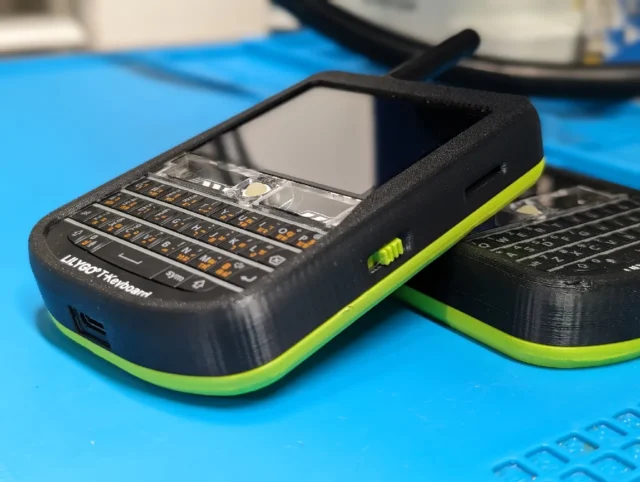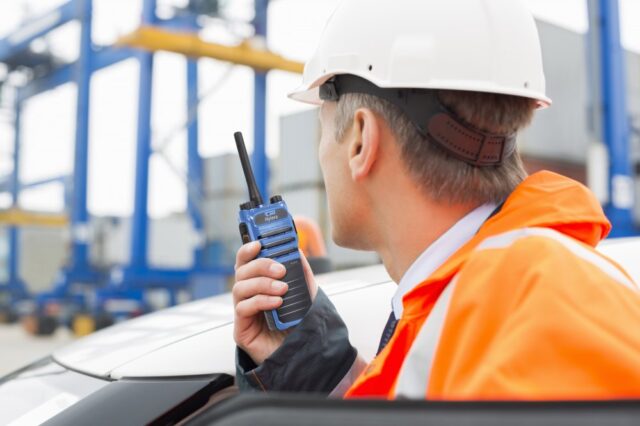In the world of digital communication, systems that provide reliable data transmission without requiring an internet connection are gaining increasing attention. Meshtastic is one such innovative solution: an open-source, low-power, radio-frequency-based mesh network system ideally suited for hiking, emergency communication, or remote areas with no cellular coverage. In this article, we’ll explore how Meshtastic works, the technology behind it, how to use it, its real-world capabilities, and its role in shaping the future of resilient, decentralized communication.
The basics of the Meshtastic system
Meshtastic is based on LoRa (Long Range) technology, which allows for low-power data transmission over long distances using unlicensed radio frequency bands. Unlike traditional point-to-point radio communication, Meshtastic uses a mesh network topology. This means that each device (node) in the network can transmit data and also forward data from other nodes, extending the overall range and reliability of the network.
The core principles behind Meshtastic include:
- Decentralization: No central server is required.
- Open-source: Hardware and software are freely available and modifiable.
- Low power consumption: Ideal for battery-powered, portable devices.
- Long-range communication: Up to several kilometers, depending on terrain and antenna.
- Scalability: The more nodes you add, the stronger the network becomes.
- Resilience: Designed to function in the absence of conventional infrastructure.
How LoRa enables Meshtastic
LoRa (Long Range) is a spread-spectrum modulation technique derived from chirp spread spectrum (CSS) technology. It allows low bit-rate data communication to be maintained over long distances with low power requirements. LoRa operates in ISM (Industrial, Scientific, Medical) frequency bands — for example, 433 MHz, 868 MHz (Europe), or 915 MHz (North America).
The advantages of using LoRa for Meshtastic include:
- Ability to communicate over several kilometers in open terrain
- Penetration through buildings and foliage
- Minimal interference thanks to chirp modulation
- Suitability for asynchronous communication (no need for constant syncing)
- Free-to-use frequencies that avoid licensing costs
- Highly efficient for small, intermittent data packets
Hardware requirements
Meshtastic runs on small, inexpensive microcontroller-based devices equipped with LoRa radios. These devices can be bought for $25–$60 USD depending on the model and included features. Commonly used hardware includes:
- TTGO T-Beam: ESP32-based board with built-in GPS and LoRa radio
- Heltec WiFi LoRa 32: ESP32 with onboard OLED and LoRa module
- RAKwireless WisBlock and RAK4631: Modular, rugged, and highly customizable options
- LILYGO T-Echo: With onboard microphone and speaker, suitable for experimental voice applications
These devices can be powered by USB, Li-ion batteries, or solar panels, making them highly portable and sustainable for off-grid usage.
Accessories and enhancements
- High-gain antennas: Improve range significantly in open terrain
- Waterproof enclosures: Make devices suitable for all-weather deployments
- Battery packs and solar controllers: Ensure long-term autonomous operation
- Bluetooth beacons and sensors: Add location or environmental sensing capabilities
Setting up a Meshtastic node
- Flashing the firmware: The Meshtastic firmware can be downloaded from the official GitHub and flashed using tools like the Meshtastic Flasher or esptool.py.
- Configuring the device: After flashing, configuration is done via:
- Meshtastic mobile app (Android/iOS)
- Desktop apps and web-based interfaces
- Command line interface (meshtastic CLI)
- Pairing with smartphones: Devices connect via Bluetooth to phones, allowing messaging and GPS location sharing.
- Connecting with other nodes: Once powered on and configured, nodes begin discovering nearby nodes and automatically join the mesh network.
Communication modes
Meshtastic supports multiple communication features tailored for resilience and efficiency:
- Encrypted text messaging (AES-256)
- GPS location sharing
- Custom channel and group IDs
- Broadcast and private messages
- Node-to-node telemetry
- Heartbeat pings and status updates
- Remote command execution via CLI
Messages are stored in a buffer and forwarded through the mesh as nodes come in range. This makes Meshtastic suitable even for mobile users traversing wide areas.
Applications of Meshtastic
Emergency communication
During natural disasters such as hurricanes, earthquakes, or wildfires, cell towers may be damaged or overloaded. Meshtastic provides a crucial lifeline for:
- Coordinating rescue operations
- Communicating between medical teams
- Connecting civilians to aid stations
- Broadcasting emergency alerts
Outdoor adventures
Groups in the backcountry use Meshtastic to:
- Share real-time location and routes
- Alert others if someone gets lost or injured
- Send short messages without cellular networks
- Track environmental data like temperature or humidity
Off-grid living and homesteading
Remote households benefit from:
- Intra-property messaging
- Monitoring solar systems and water tanks
- Interacting with IoT sensors and actuators
- Staying connected without internet dependency
Events and large gatherings
At festivals or protest sites, Meshtastic helps:
- Avoid mobile network congestion
- Set up temporary command centers
- Enable peer-to-peer messaging among organizers
- Track crowd movement anonymously
Educational and scientific uses
- Used in STEM classrooms to teach networking and RF principles
- Enables wildlife tracking and environmental monitoring in research projects
- Facilitates low-budget satellite and balloon payload telemetry
Tactical and preparedness
- Used by preppers and emergency response teams
- Reliable fallback communication when infrastructure is offline
- Seamless integration with solar-powered kits for go-bags
Integration with other platforms
Meshtastic is often integrated into wider systems:
- Home Assistant: For smart home automation
- Node-RED: Visual programming for automation
- MQTT brokers: To interface with online dashboards when internet is available
- APRSDroid & APRS-IS: Amateur radio integrations for location sharing
Advanced users combine Meshtastic with:
- Raspberry Pi base stations
- External GPS modules for high-accuracy positioning
- Battery management and logging systems
- Remote sensor networks for agriculture and environment
- Satellite backhaul (Iridium, Starlink) via gateways
Advantages and limitations
Advantages
- Low power, long range: Ideal for remote environments
- Community-driven: Constant innovation and bug fixes
- Affordable: Entry-level kits available under $40
- Flexible: Suitable for DIY, industrial, tactical, or recreational use
- Secure: Strong encryption and optional obfuscation features
Limitations
- Limited bandwidth: No real-time voice or video
- Dependent on node density: Sparse setups may have coverage gaps
- Line-of-sight affects range: Terrain and buildings limit performance
- Tech-savvy setup: Initial configuration may be challenging for non-technical users
- No internet fallback: Pure LoRa systems lack IP routing without external bridges
The Meshtastic ecosystem and community
The Meshtastic project thrives due to its passionate and growing global community. Key contributors include hobbyists, developers, amateur radio operators, and off-grid technology enthusiasts.
Community platforms:
- Discord: Real-time help and development discussions
- Reddit: Experience sharing and use case showcases
- GitHub: Core development and issue tracking
- Documentation: Comprehensive wiki at meshtastic.org/docs
- YouTube channels: Educational content, hardware reviews, and tutorials
Local groups and language-specific forums are forming worldwide, making the ecosystem increasingly diverse and accessible.
Future developments
The project roadmap includes:
- Mesh protocol improvements: Better message routing and memory handling
- Dynamic bandwidth allocation: Adapting to congestion
- Multichannel support: For segmented applications
- New device compatibility: Support for more hardware vendors
- Firmware OTA updates: Easier large-scale deployment
- Mesh bridging: Integration with internet gateways and satellite relays
- Encrypted firmware signing: For tamper-resistant devices
Meshtastic represents a shift in how we think about communication. It empowers individuals and communities to stay connected even in the most disconnected environments. Whether you’re a hiker, homesteader, educator, or emergency responder, this technology opens the door to affordable, resilient, and decentralized messaging.
As we face increasing climate risks, political instability, and digital centralization, tools like Meshtastic offer a way to reclaim local control over communication. It’s not just a gadget — it’s a movement.
From education to exploration, from safety to sovereignty — Meshtastic is redefining what it means to stay connected without depending on centralized systems. Its grassroots momentum is a testament to the power of community-driven innovation, and its potential is only just beginning to be realized.
Image(s) used in this article are either AI-generated or sourced from royalty-free platforms like Pixabay or Pexels.
Did you enjoy this article? Buy me a coffee!






